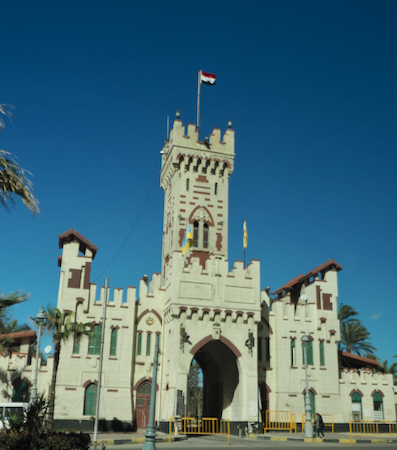
Grand entry to the Montaza Palace grounds
|
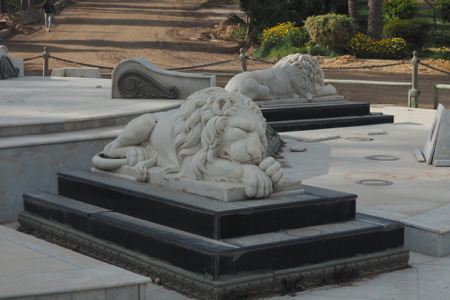
Sleeping lion sculptures |
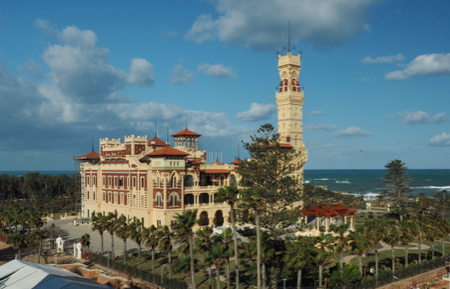
Montaza Palace
|
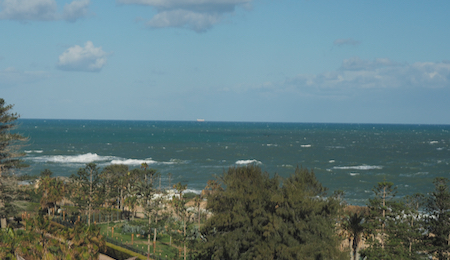
View of the Med from our hotel balcony
|
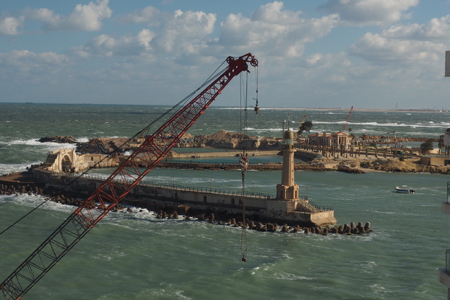
View from our hotel balcony
|
Today's first stop was at the Catacombs of Kom el Shouqafa, meaning a “mound of pottery shards.” In 1900 a donkey pulling a cart across the land fell into a hole which was found to be a shaft, like a well, leading down to about 300 niches for burying sarcophagi.
Within the area is the tomb of Tigrane Pasha from the first century CE.
Access to the catacombs was via spiral stairs to all three levels that each branched out into rooms of niches called “public locali.” One was a very elaborate family tomb with carvings, statues, and painted scenes. Some statues are Egyptian in style but are decorated with Roman dress and hair styles.
Around the courtyard of the entrance to the catacombs were tombs and sarcophagi found in other areas.
|
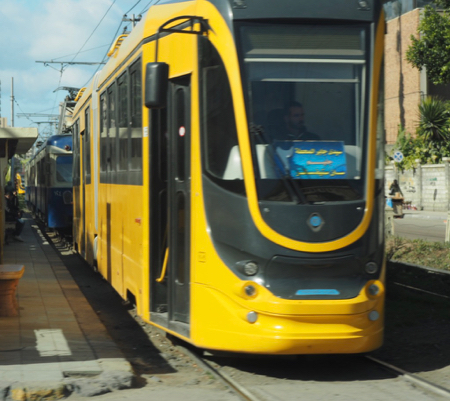
Trolly car
|
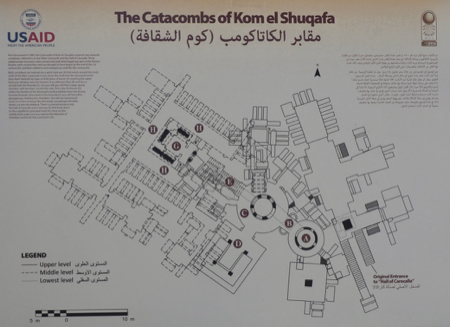
|
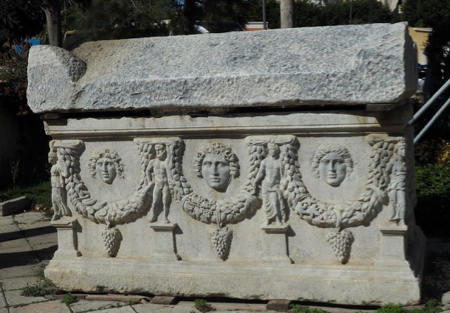
Sarcophagus at the Catacombs of Kom El-Shouqafa
|
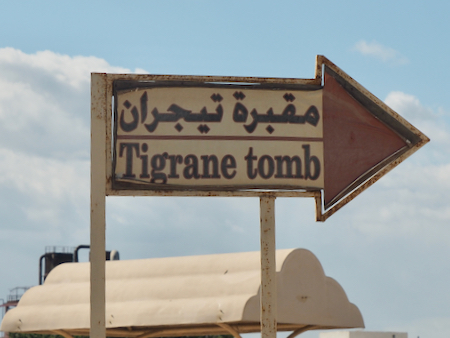
|
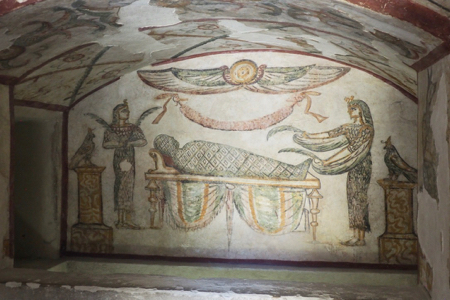
Mummified Osiris lying on a bed flanked by Isis and Nephthys |
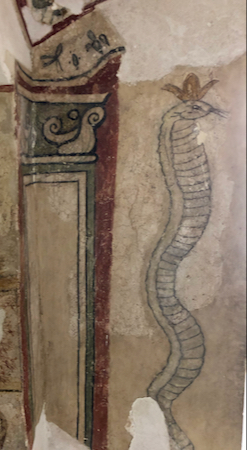
A cobra goddess
|
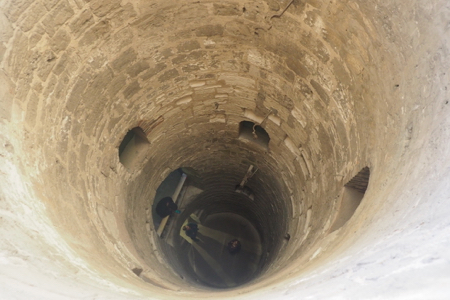
Opening in the center of the circular staircase down to the catacombs |
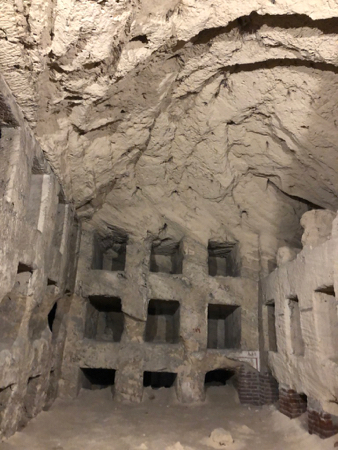
Burial chambers
|
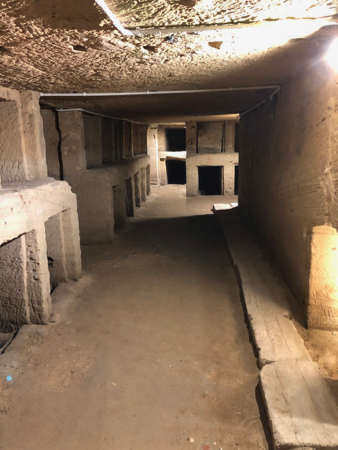
Burial chambers
|

Bones from the tombs |
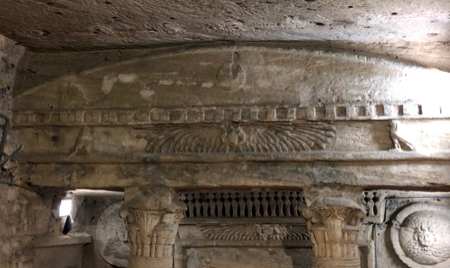
Winged sun disk with uraeus (cobras) and flanked by Horus falcons |
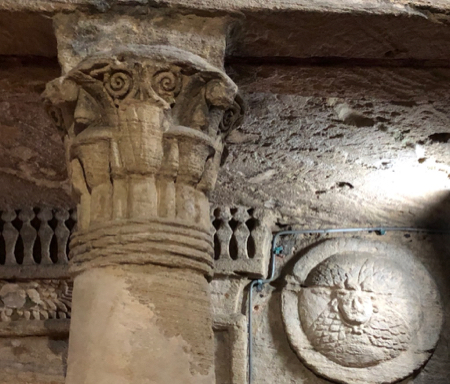
Capital topped by papyrus, lotus, and acanthus leaves with a volute (spiral) scroll
|
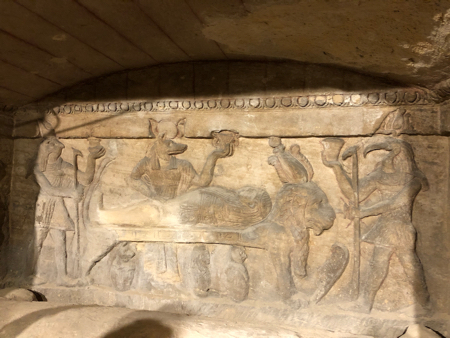
Anubis mummifying a body
|
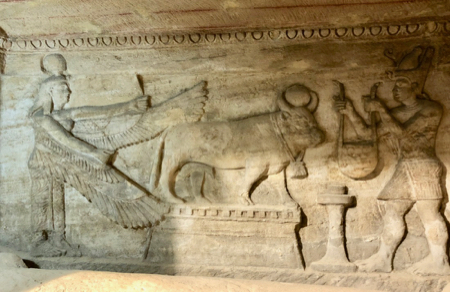
Sarcophagus with Apis-bull receiving a gift |
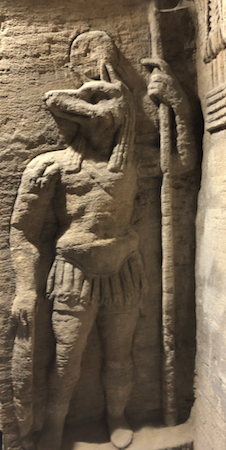
Anubis
|
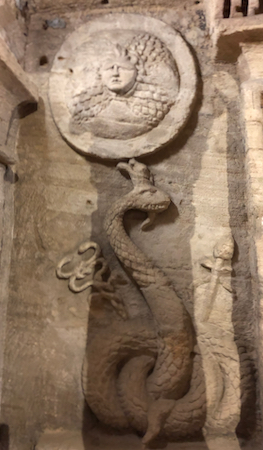
Snake with a Roman caduceus on either side of the entry to the principal tomb chamber
|
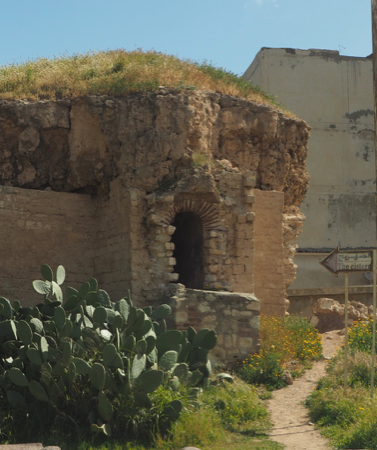
The cistern |
The next event was a photo stop at the Pompey’s Pillar, a column of rose granite from Aswan. It is all that remains of a triumphal column to honor emperor Diocletian in 300 CE. The column originally supported a statue of Diocletian in full armor. Legend said that the head of Pompey was buried under it or that his ashes lay at the top, which is why it has its name. But since the dates don’t fit, it is a myth. There was also a sphinx near the pillar.

|
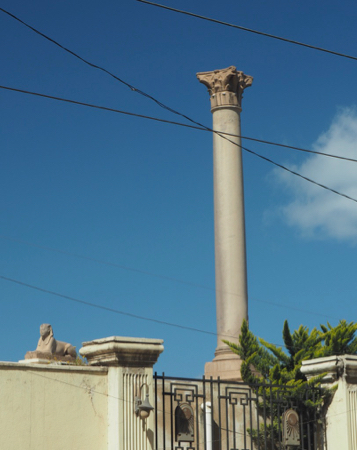
Pompey's Pillar
|
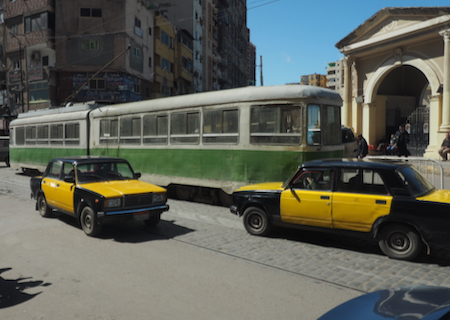
Another trolly |
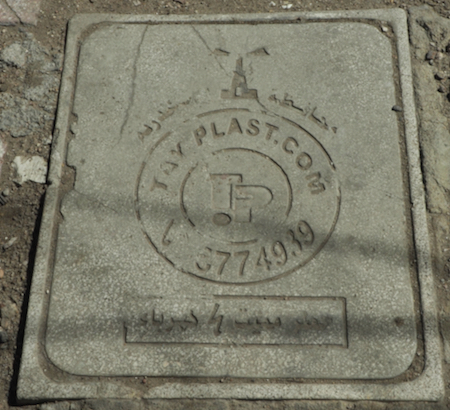
Manhole cover
|
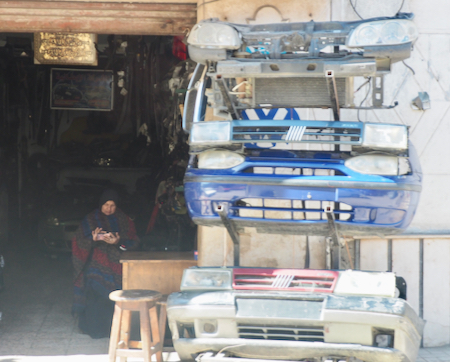
A shop selling auto parts - large ones, in this photo |

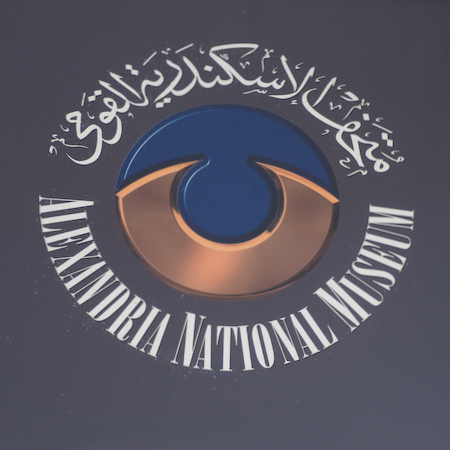
The last stop before lunch was to visit the Alexandria National Museum. It was opened in 2003 in an old palace that had served as the American Embassy for a while.
On the ground floor were items from ancient Egypt which had been found locally. On the first floor were items recovered from the Mediterranean after they fell into the sea during an earthquake. The first floor also had items from the Roman and Greek eras of Alexandria and the second floor had religious relics from Coptic and Islam faiths and a small section of modern items.
|
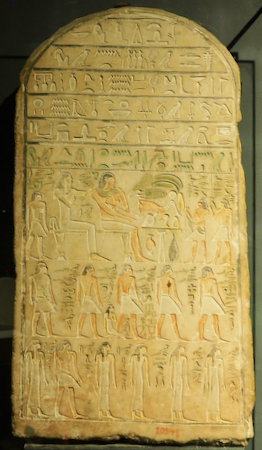
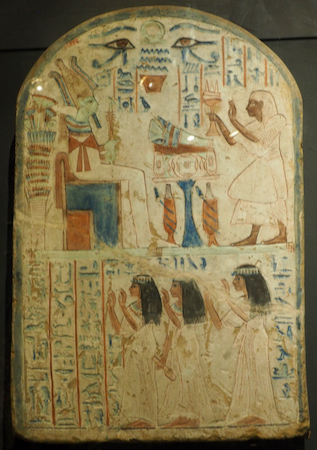
Stele with many figures and symbols |
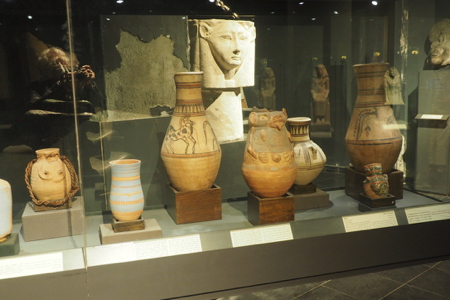
Pottery - the goddess Hathor is center, top |
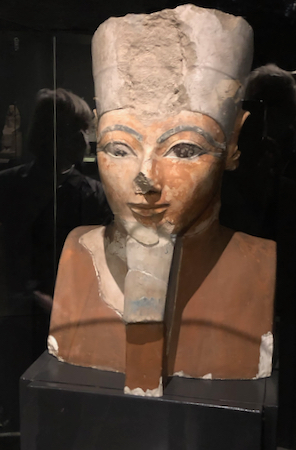
Head of Queen Hatshepsut
|
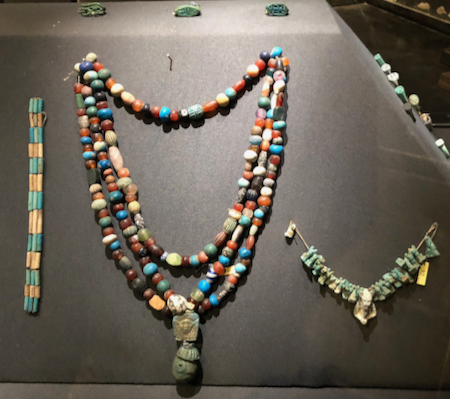
Jewelry
|
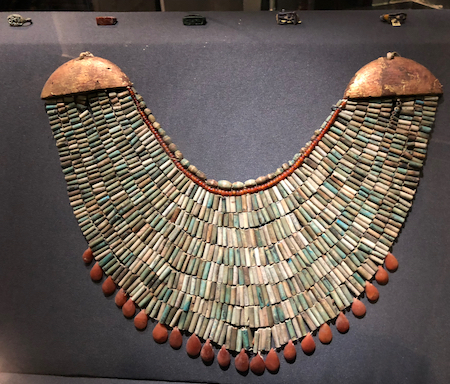
Breastplate
|
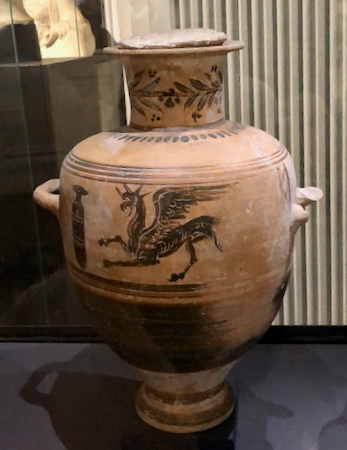
|
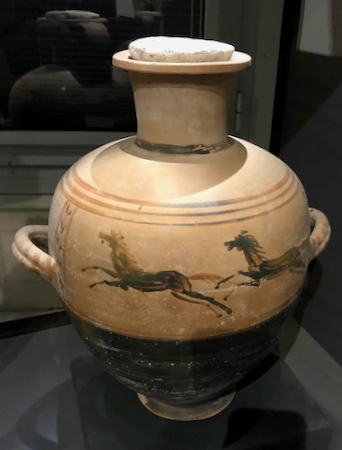
|
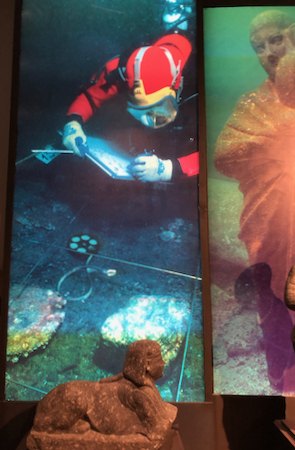
Photos from underwater archeology project in the area of the Citadel of Qaitbay
|
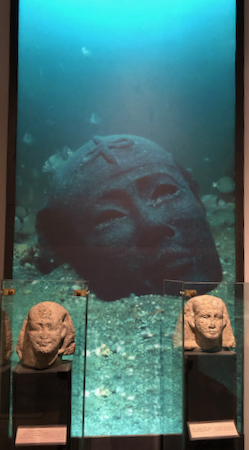
Photos from underwater archeology project in the area of the Citadel of Qaitbay
|
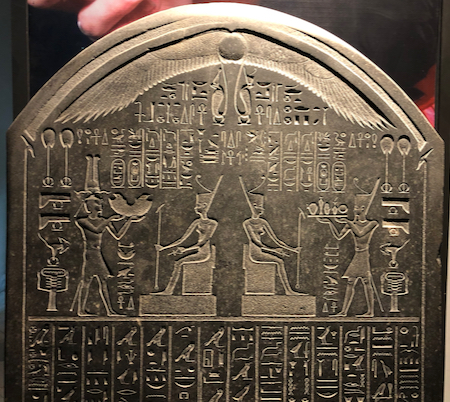
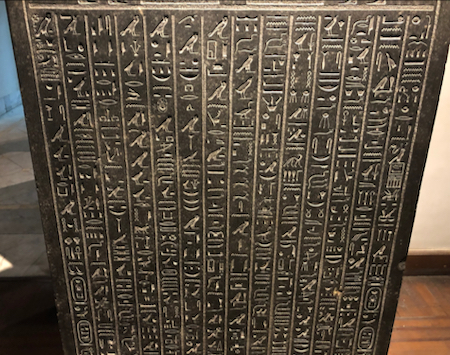
|
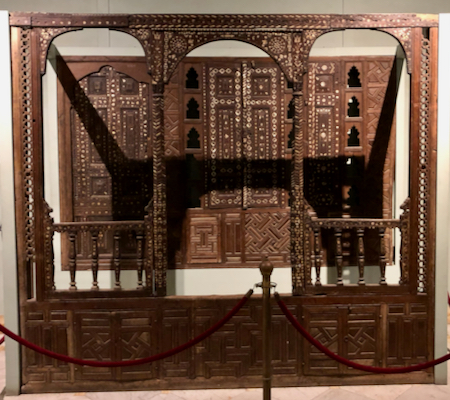
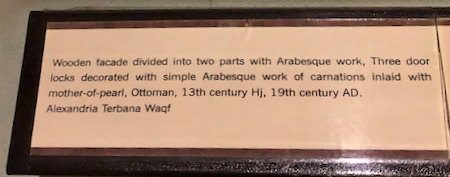
|
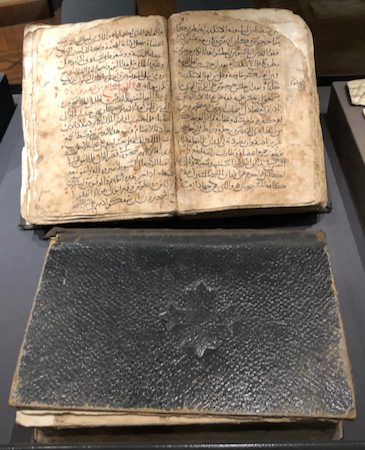
|
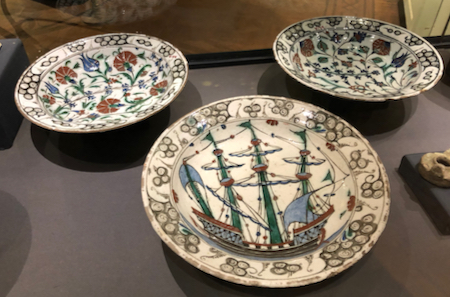
Plates |
Lunch was at a restaurant with more Egyptian fare and then we took a brief stroll in the hectic women’s district and flea market. Crowds and cheap clothes, used items, and lanterns for Ramadan filled the street.
|
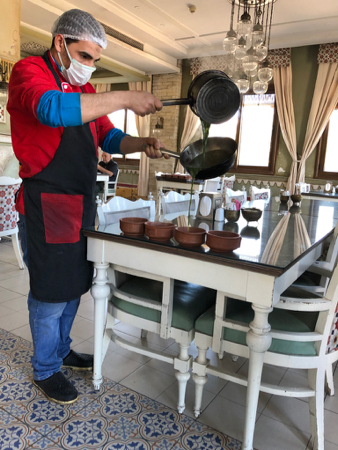
Our luncheon soup
|
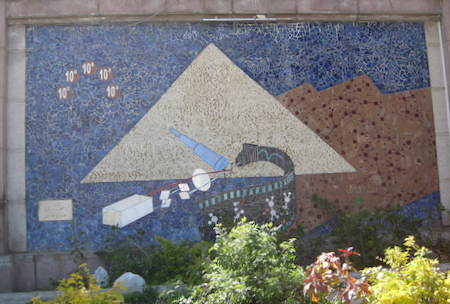
Wall mosaics
|
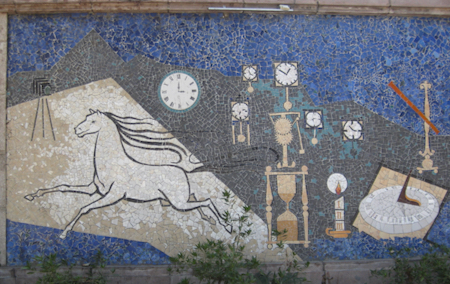
Wall mosaics |
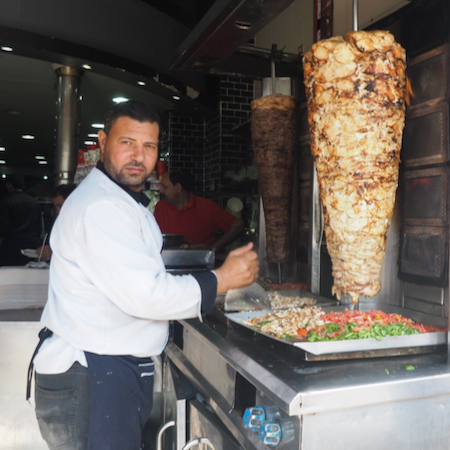
Doner kebab in the market
|
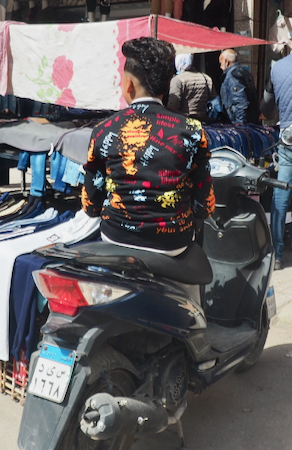
Note the hair-do
|
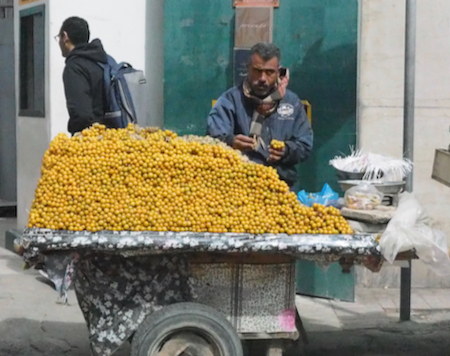
Vendor selling fruit |
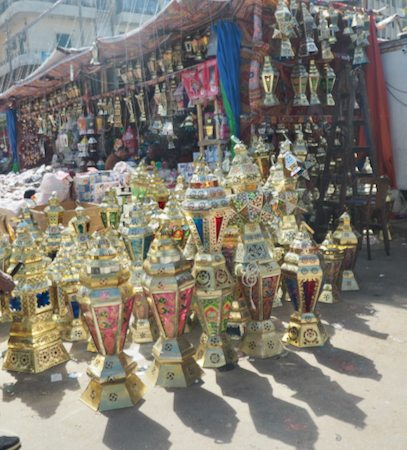
Ramadan gifts for sale
|
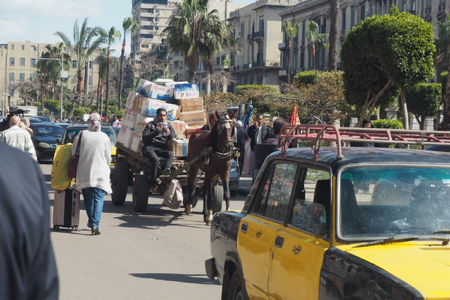
Street scene
|
After the market - back to the hotel to rest, read, nap, write, and do a last laundry.
We enjoyed another Egyptian dinner - stroganoff beef, potato, and vegetables, soup, and chocolate desserts, either a brownie or lava cake both with ice cream.
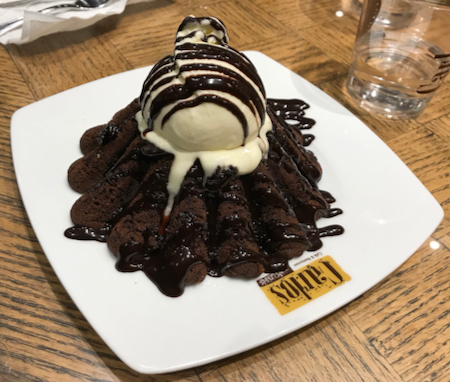
|